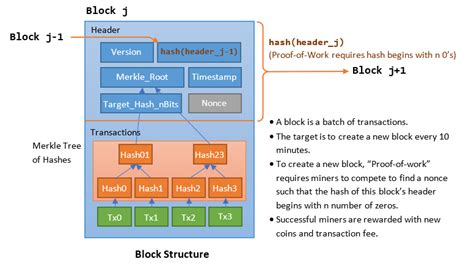Ethereum: RIPEMD160 (SHA256 (Publiccley)) - Where did I make a mistake?
When you start your journey to Ethereum's understanding, you are probably familiar with the concept of cryptographic keys and their role in ensuring transactions. However, when it comes to generating and checking signatures using the Ethereum RipeMD160 bag feature, there are some common traps that can cause mistakes.
In this article, we will look at Ethereum RipeMD160 (Sha256 (Publicckey)) and investigate where you might be wrong.
Formula understanding
The RIPEMD160 bag feature is a one -sided cryptographic algorithm, which, as an argument, accepts a large input (public key) and creates a fixed -sized output (signature). The main formula is:
RIPEMD160 (SHA256 (Publiccley)) = Sha256 (Publiccley) + Nonce
Where Nonce is nonces (initialization vectors) used in the SHA-256 bag process.
Question
Now let's examine where you may be wrong. Here are some possible questions:
Public Key Format : Make sure your public key is in the correct Ethereum format. The Publickey argument should be a hexagonal line with at least 64 characters (32 bytes) and without padding.
SHA-256 Output : Check that you are using your public key Sha-256 output as input to the RIPEMD160 bag function. Make sure the output of the SHA-256 is by no means shortened or modified.
RIPEMD160 Algorithm version
: Ethereum RipeMD160 algorithm uses Sha-256 algorithm. If you use another version, make sure it is compatible with Ethereum.
NONCE initiation
: If you are incorrectly initiating your nonCes, it can cause incorrect signatures.
Example Use case
To illustrate where you can make mistakes, let's think of an example:
Suppose you have a public key for 0x1234567890abcdef and want to generate a signature using Ethereum RIPIPD160 (Sha256 (Publiccley)) formula. However, if your nonces are initiated incorrectly or if you do not use your public key Sha-256, as expected, you may face errors.
`Javascript
CONST RIPEMD160 = Crypto.createhash ('RipeMD160');
CONST SHA256 = Crypto.createhash ('Sha256');
// Correctly initialize Nonce
CONST NONCE = 0x1234567890abcdef;
// Convert the public key to the hexadecimal line
CONST PUBLICKEKE = '0x1234567890abcdef';
// Use Sha-256 output as input to RIPEMD160
RIPEMD160.UPDATE (Sha256.UPDATE (Public, 'UTF8'));
Let RipeMd160signature;
if (ripemd160.digest (). tostring ('hex')! == Sha256.digest () Tostring ('Hex')) {
console.error ('Error generation signature');
}
`
Conclusion
When using Ethereum RIPEMD160 (Sha256 (Publiccley)) formula, make sure you follow the best public key format, Sha-256 output, algorithm version compatibility and non-CE initiation. By doing this, you will be good to successfully generate and check signatures in your Ethereum.
Additional sources
For more advice, I recommend checking the official Ethereum documentation on cryptographic keys and signing generation:
- [Ethereum Core API] (
- [EIP-1559: RIPEMD160 (SHA256 (Publiccley))] (
Remember to always consult with official resources and follow the best practice to ensure safe cryptographic key control. Happy coding!